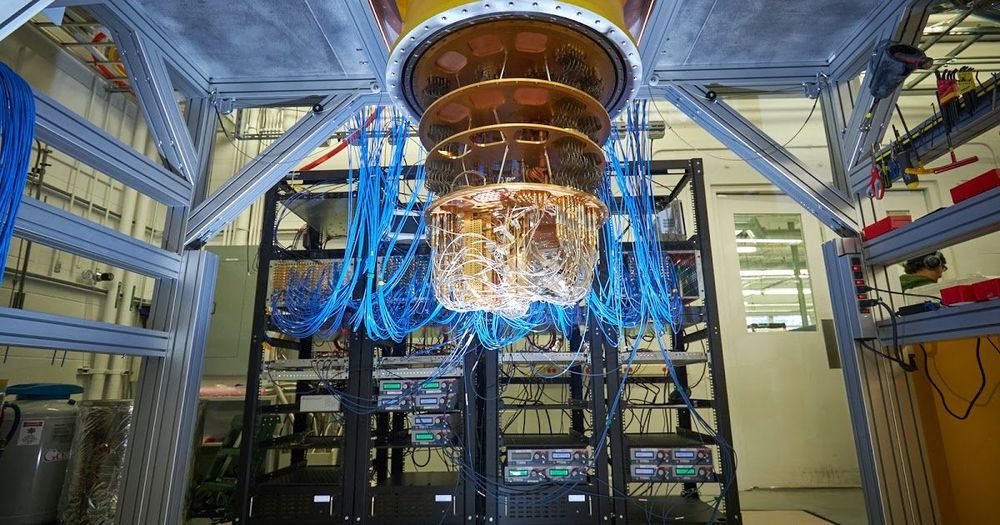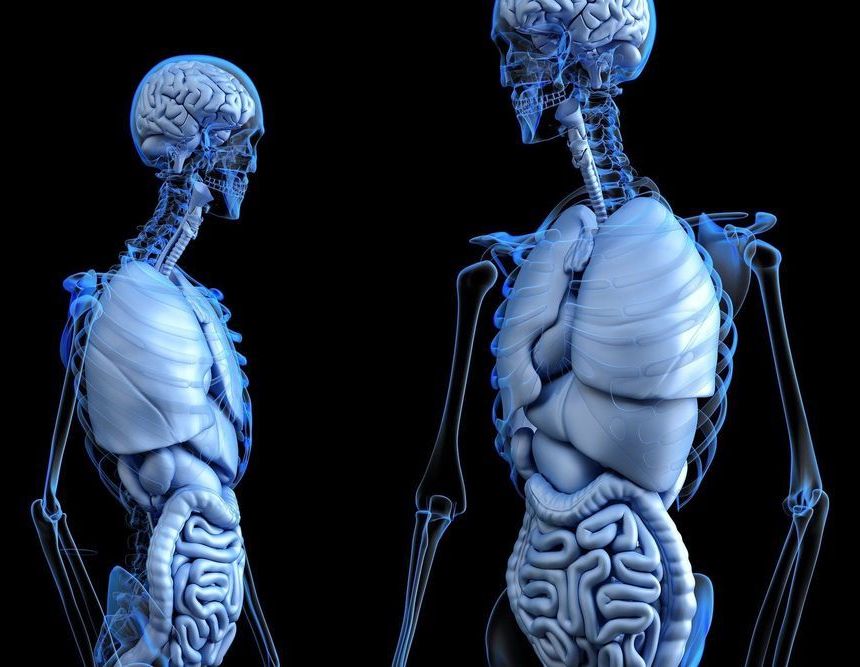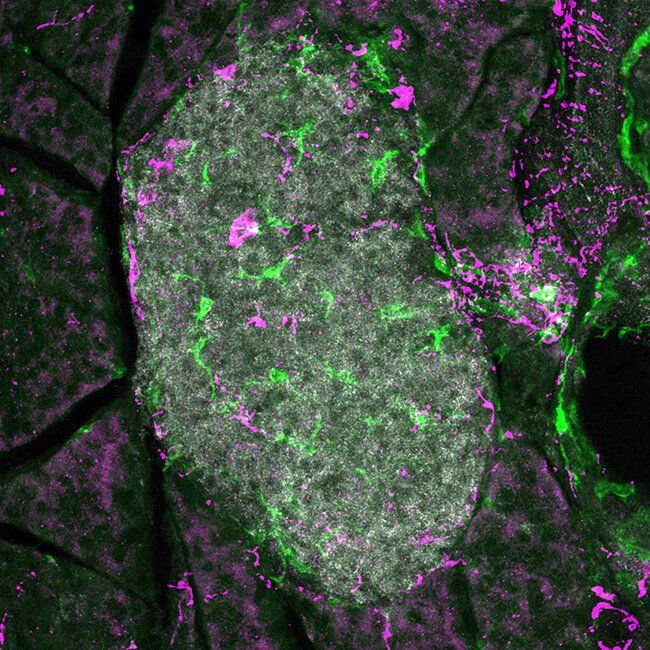Page 6199
Aug 27, 2020
How language shapes the way we think
Posted by Shailesh Prasad in category: neuroscience
You’ll be surprised by how much your language shapes your perspective.
There are about 7,000 languages spoken around the world — and they all have different sounds, vocabularies and structures. But do they shape the way we think? Cognitive scientist Lera Boroditsky shares examples of language — from an Aboriginal community in Australia that uses cardinal directions instead of left and right to the multiple words for blue in Russian — that suggest the answer is a resounding yes. “The beauty of linguistic diversity is that it reveals to us just how ingenious and how flexible the human mind is,” Boroditsky says. “Human minds have invented not one cognitive universe, but 7,000.”
This talk was presented at an official TED conference, and was featured by our editors on the home page.
Aug 27, 2020
Energy Kites Are The Next Level of Wind Power
Posted by Shailesh Prasad in categories: energy, sustainability
Aug 27, 2020
Scaling Up Fundamental Quantum Chemistry Simulations on Quantum Hardware
Posted by Genevieve Klien in categories: chemistry, information science, quantum physics, robotics/AI
Accurate computational prediction of chemical processes from the quantum mechanical laws that govern them is a tool that can unlock new frontiers in chemistry, improving a wide variety of industries. Unfortunately, the exact solution of quantum chemical equations for all but the smallest systems remains out of reach for modern classical computers, due to the exponential scaling in the number and statistics of quantum variables. However, by using a quantum computer, which by its very nature takes advantage of unique quantum mechanical properties to handle calculations intractable to its classical counterpart, simulations of complex chemical processes can be achieved. While today’s quantum computers are powerful enough for a clear computational advantage at some tasks, it is an open question whether such devices can be used to accelerate our current quantum chemistry simulation techniques.
In “Hartree-Fock on a Superconducting Qubit Quantum Computer”, appearing today in Science, the Google AI Quantum team explores this complex question by performing the largest chemical simulation performed on a quantum computer to date. In our experiment, we used a noise-robust variational quantum eigensolver (VQE) to directly simulate a chemical mechanism via a quantum algorithm. Though the calculation focused on the Hartree-Fock approximation of a real chemical system, it was twice as large as previous chemistry calculations on a quantum computer, and contained ten times as many quantum gate operations. Importantly, we validate that algorithms being developed for currently available quantum computers can achieve the precision required for experimental predictions, revealing pathways towards realistic simulations of quantum chemical systems.
Aug 27, 2020
How Close Are Computers to Automating Mathematical Reasoning?
Posted by Genevieve Klien in categories: mathematics, robotics/AI
AI tools are shaping next-generation theorem provers, and with them the relationship between math and machine.
Aug 27, 2020
Fungi In The Blood, Fungi In The Brain: Rapamycin To The Rescue?
Posted by Mike Lustgarten in categories: biotech/medical, life extension, neuroscience

Here’s my latest video!
The incidence of fungi bloodstream infections increases during aging-is that a potential explanation for the presence of fungi in the brains of Alzheimer’s disease patients? Rapamycin is a known antifungal-is it effective against fungi that are found in the blood and brain?
Aug 27, 2020
Cardiology trial shows potential benefit of genetic testing when selecting blood thinners
Posted by Genevieve Klien in categories: biotech/medical, genetics
An international, first-of-its-kind cardiology trial used personalized genetic testing to reduce by 34 percent the number of serious adverse events following balloon angioplasty, a treatment for the most common form of heart disease.
For patients undergoing percutaneous coronary intervention (PCI)—a non-surgical procedure where physicians inflate a balloon and place a metal stent in narrowed heart arteries to improve blood flow to the heart —the choice of antiplatelet therapy can be critical to post-treatment success, and to minimize the chance of heart attack or stroke.
The TAILOR-PCI trial, co-led by principal investigators Dr. Michael Farkouh, cardiologist and Multinational Clinical Trials Chair at the Peter Munk Cardiac Centre and Dr. Naveen Pereira, Professor of Medicine and cardiologist at Mayo Clinic, studied the effectiveness of genetic-guided therapy in patients that have had PCIs when compared to conventional therapy.
Aug 27, 2020
LG officially announces its battery-powered air purifier mask
Posted by Genevieve Klien in categories: biotech/medical, wearables
LG has officially announced a portable air purifier that you wear on your face like a mask. The PuriCare Wearable Air Purifier uses a pair of replaceable filters similar to what you’d find in LG’s range of air purifiers for the home, pairing them with battery-powered fans to help you breathe. LG says the device has sensors to detect when you’re breathing in or out, and adjusts the fans’ speeds accordingly.
Today’s announcement ahead of IFA 2020 doesn’t explicitly mention the COVID-19 pandemic, but it heavily implies that the mask was developed in response to it. The company says the wearable air purifier is designed to replace the “inconsistent” homemade masks worn by some people, as well as the disposable masks that it says have been in short supply.
Back in July, when LG first announced the mask and said it would be donating 2,000 of the devices to a university hospital in Seoul, one executive from the company said they hoped it would help medical staff “amid the protracting COVID-19 pandemic,” The Korea Herald reported. They hoped it would make it easier for medical staff to wear a mask for hours at a time.
Aug 27, 2020
Rejuvenating old organs could increase donor pool
Posted by Kevin Huang in categories: biotech/medical, life extension
Very interesting.
Despite the limited supply of organs available for patients on waitlists for transplantation, organs from older, deceased donors are frequently discarded or not utilized. Available older organs have the potential to close the gap between demand and supply that is responsible for the very long wait-times that lead to many patients not surviving the time it takes for an organ to become available. Older organs can also often provoke a stronger immune response and may put patients at greater risk of adverse outcomes and transplant rejection. But, as the world population ages, organs from older, deceased donors represent an untapped and growing resource for patients in need. Investigators from Brigham and Women’s Hospital are leading efforts to breathe new life into older organs by leveraging a new class of drugs known as senolytics, which target and eliminate old cells. Using clinical and experimental studies, the team presents evidence that senolytic drugs may help rejuvenate older organs, which could lead to better outcomes and a wider pool of organs eligible for donation. Results are published in Nature Communications.
“Older organs are available and have the potential to contribute to mitigating the current demand for organ transplantation,” said corresponding author Stefan G. Tullius, MD, Ph.D., chief of the Division of Transplant Surgery at the Brigham. “If we can utilize older organs in a safe way with outcomes that are comparable, we will take a substantial step forward for helping patients.”
Continue reading “Rejuvenating old organs could increase donor pool” »
Aug 27, 2020
Blocking nerve signals to the pancreas halts type 1 diabetes onset in mice
Posted by Kevin Huang in category: biotech/medical
Your pancreas is a little sweet potato-shaped organ that sits snug behind your stomach. The pancreas is studded with islets, the cell clusters that house insulin-producing beta cells. In people with type 1 diabetes, the body’s own immune cells head for the islets and start attacking the beta cells. No one knows exactly what triggers this attack.
One clue may lie in the pattern of beta cell death. Many beta cells are killed off in big patches while other beta cells are mysteriously untouched. Something seems to be drawing immune cells to attack specific groups of beta cells while ignoring others.
In a new Science Advances study, researchers at La Jolla Institute for Immunology (LJI) report that the nervous system may be driving this patchy cell die-off. Their new findings in a mouse model suggest that blocking nerve signals to the pancreas could stop patients from ever developing type 1 diabetes.

















